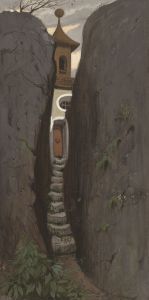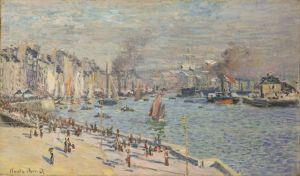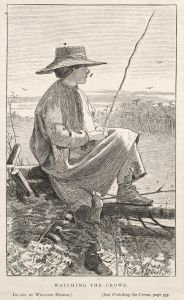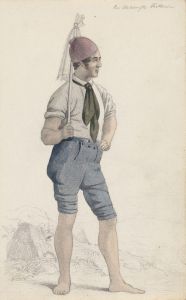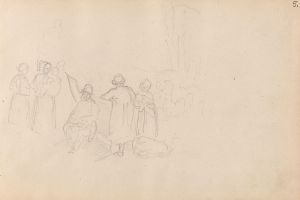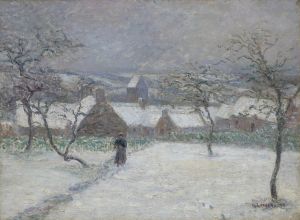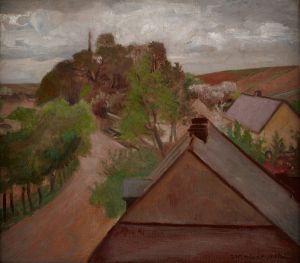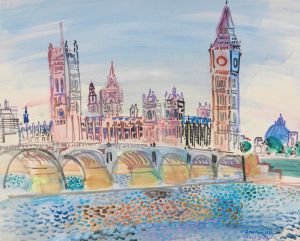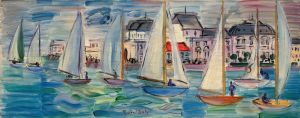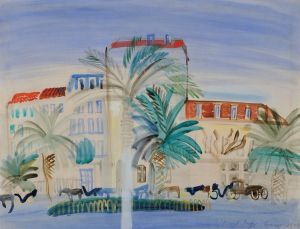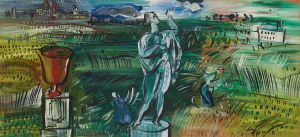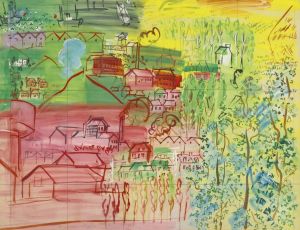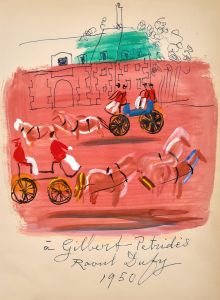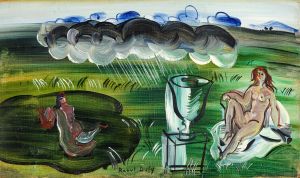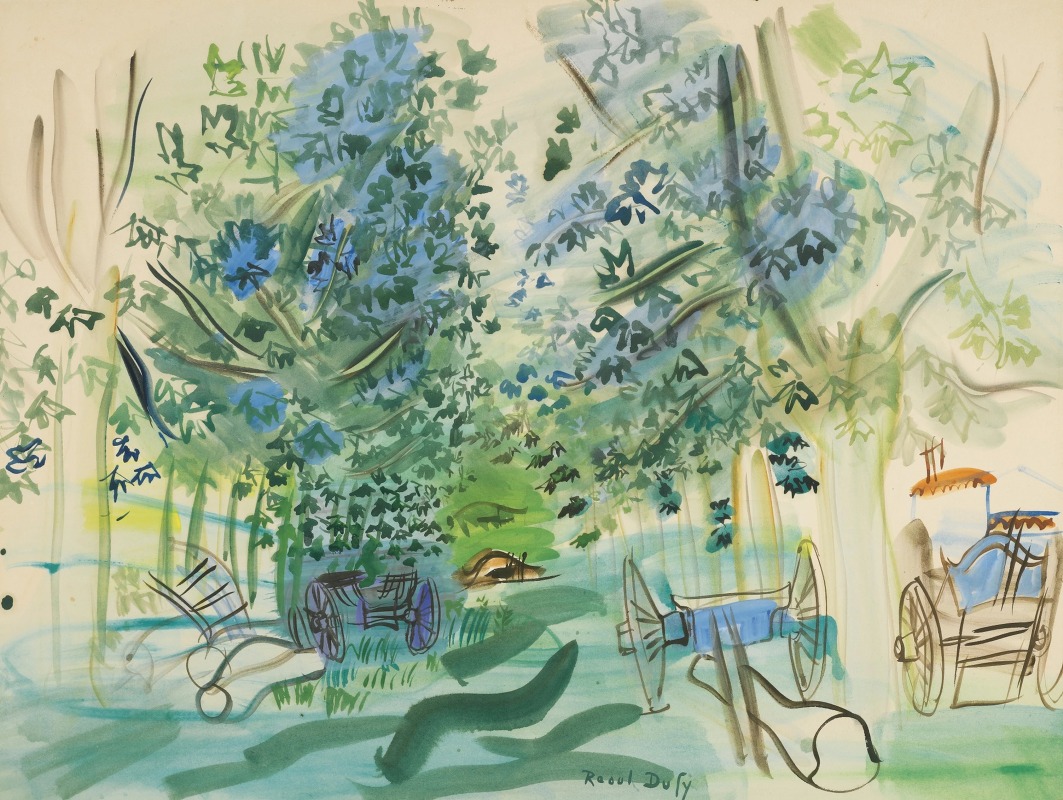
Les charrettes à Montsaunès
A hand-painted replica of Raoul Dufy’s masterpiece Les charrettes à Montsaunès, meticulously crafted by professional artists to capture the true essence of the original. Each piece is created with museum-quality canvas and rare mineral pigments, carefully painted by experienced artists with delicate brushstrokes and rich, layered colors to perfectly recreate the texture of the original artwork. Unlike machine-printed reproductions, this hand-painted version brings the painting to life, infused with the artist’s emotions and skill in every stroke. Whether for personal collection or home decoration, it instantly elevates the artistic atmosphere of any space.
Raoul Dufy (1877-1953) was a French Fauvist painter known for his colorful and decorative style. One of his notable works is "Les charrettes à Montsaunès," which translates to "The Carts at Montsaunès." This painting exemplifies Dufy's characteristic use of vibrant colors and dynamic compositions.
"Les charrettes à Montsaunès" captures a rural scene in the village of Montsaunès, located in the Haute-Garonne department in southwestern France. The painting depicts several horse-drawn carts, a common sight in the French countryside during the early 20th century. Dufy's portrayal of these carts and the surrounding landscape reflects his interest in everyday life and his ability to transform ordinary scenes into lively and engaging compositions.
Dufy was associated with the Fauvist movement, which emerged in the early 20th century. Fauvism is characterized by its bold use of color, simplified forms, and an emphasis on painterly qualities. Dufy, along with other Fauvist artists like Henri Matisse and André Derain, sought to express emotion through color and brushwork rather than through realistic representation.
In "Les charrettes à Montsaunès," Dufy employs a bright and varied palette, using colors that are not necessarily true to life but that convey a sense of joy and vitality. The painting features a mix of greens, blues, yellows, and reds, creating a harmonious yet dynamic composition. The brushstrokes are loose and fluid, giving the painting a sense of movement and spontaneity.
Dufy's work often includes elements of both painting and drawing, and "Les charrettes à Montsaunès" is no exception. The outlines of the carts and figures are clearly defined, almost as if they were drawn with a pen, while the areas of color are applied in broad, expressive strokes. This combination of line and color is a hallmark of Dufy's style and contributes to the overall energy of the painting.
Raoul Dufy was also influenced by the decorative arts, and his work often blurs the line between fine art and design. He collaborated with fashion designers, created textile patterns, and worked on large-scale public commissions. This decorative sensibility is evident in "Les charrettes à Montsaunès," where the composition and color scheme create a visually pleasing and cohesive image.
Throughout his career, Dufy traveled extensively and drew inspiration from various locations, including the French Riviera, the Normandy coast, and the bustling streets of Paris. His ability to capture the essence of a place and its atmosphere is evident in "Les charrettes à Montsaunès," where the rural charm of Montsaunès is brought to life through his vibrant and expressive style.
"Les charrettes à Montsaunès" is a testament to Raoul Dufy's skill as a colorist and his ability to infuse everyday scenes with a sense of beauty and joy. The painting remains an important example of Fauvist art and continues to be appreciated for its lively composition and masterful use of color.





